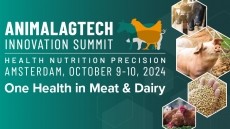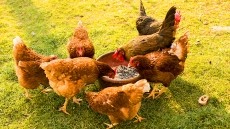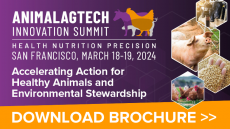Investment to the tune of US$3m in dairy agtech firm focused on reducing GHG emissions

The Canada and New York-based agtech company announced the CAD $3.9m (US$2.98m) investment from Sustainable Development Technology Canada (SDTC) last week.
SDTC is a foundation established by the Canadian government to support local companies that are developing technologies focused on addressing clean air, climate change, clean water or clean soil. The organization’s goal is to act as a catalyst for “Canada’s cleantech ecosystem” and to provide for the generation and global use of clean technologies developed in Canada.
The financial investment is set to support SomaDetect as it moves through several of its next developmental steps, said Bethany Deshpande, CEO of SomaDetect.
She told FeedNavigator. “We are incredibly excited to work with SDTC to drive further development of SomaDetect technology,which has the capacity to positively impact our entire dairy production system.”
Funding support
The funding is intended to support SomaDetect’s work in three areas, said Deshpande. These include supporting existing employee positions and adding new ones, the construction and deployment of about 2,000 sensors and the collation of "massive amounts of data for training robust AI algorithms.”
The capital will also go towards an expanded pilot program to test the use of SomaDetect’s technology.
“We are planning to grow our staff, commercialize our technology, launch our Series A financing round, and build algorithms that matter for dairy farmers,” said Deshpande about next steps for the agtech innovator.
Milk analysis and GHG emission reduction
SomaDetect’s technology uses in-line sensors and developed algorithms to analyze elements in milk and improve dairy production from every cow in a milking herd.
The sensing system uses light-scattering technology, algorithms and cloud computing rather than chemicals to assess several elements of milk quality during milking, the company said. The process does not alter the milk analyzed.
The system is intended to provide practical, usable data to producers regarding milk quality and cow and herd health. It checks for elements including fat, protein, the fat to protein ratio, progesterone, somatic cell counts and the presence of antibiotics. It also is intended to be able to provide information regarding cow health, the presence of nutritional disorders like ketosis or acidosis and feed quality, according to company information.
The company currently has sensors units on 13 pilot farms in Atlantic Canada, Ontario, New York and Minnesota, working with about 4,500 cows, said Deshpande.
“These farms are helping us test our technology and collect data to build algorithms that will help us provide the information that farmers need to improve herd management decisions,” she said. “We are currently focusing on capturing data to manage the health and reproduction of individual cows.”
Research is demonstrating that greenhouse gas emissions on dairy farms can be reduced when more informed management decisions are made, she said.
“When dairy farmers have the information they need to make decisions about whether a cow needs attention, those cows will benefit from less time spent untreated, shorter treatment overall, and as a result, those animals will live longer, healthier, more productive lives,” she said. “We expect this to mean that the same inputs of feed, housing, and water would generate a larger quantity of milk [than] from animals under treatment.”
Dairy cows experiencing long-term health challenge generate less milk, she added.
By improving animal health and production practices, the anticipation is that less energy and potentially fewer cows will be needed to generate the same amount of milk – which would reduce the GHG emissions on the dairy farm, Deshpande said.
“It is estimated that this project will result in a 5-8% reduction in associated GHG emissions in dairy farms using our sensor technology,” she said.


















